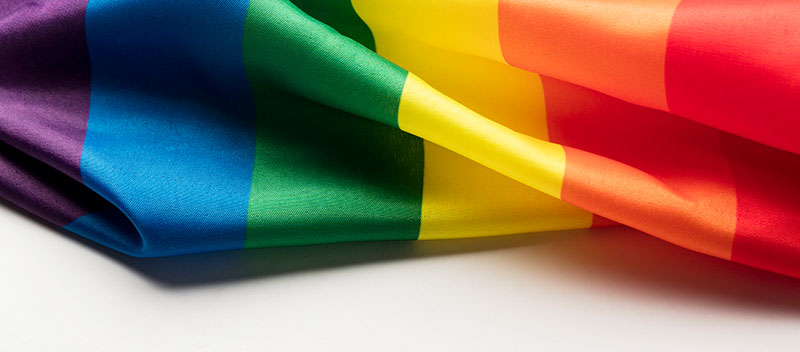Last updated on October 14, 2021
October 1 kicks off 31 days of “LGBT History Month”!
But wait! Wasn’t LGBTQ+ Pride Month just held in June?
Yes. “Pride” Month was in June. LGBT History Month is in October. While both months celebrate the LGBTQ+ community, they were founded for two different reasons.
What is LGBT History Month?
LGBT History Month, held each year in October, was created in 1994 by Missouri high school history teacher Rodney Wilson to serve as a call to action and commemoration in honor of historical figures from the LGBTQ+ community. As a history teacher, he felt that textbooks and the media lacked equitable LGBT representation, and that it was necessary for our society to recognize, tell the stories of, and honor important gay and lesbian historical figures who, despite the adversities and discriminations they faced in less-accepting times – and risking their reputations, careers, and safety – managed to “come out,” overcome, accomplish great feats and rise to success.
In 1995, one year after Rodney Wilson’s proposal, the General Assembly of the National Education Association passed a resolution to include LGBT History Month within its list of commemorative months.
The month of October was selected for LGBT History Month to coincide with the already-established National Coming Out Day, held on Oct. 11, and the anniversary of the first march on Washington for gay and lesbian rights, on Oct. 14, 1979.
Over the years, LGBT History Month has evovled into a national coordinated effort to highlight exemplary role models from the LGBT community.
Why is LGBT History Month important?
LGBT History Month is meant to highlight and celebrate the history and achievements of lesbian, gay, bisexual, and transgender people as exemplary role models to people who have never heard of them before – especially for younger generations.
For minority groups, equitable access to opportunities, proportionate visibility and the authenticity and accuracy of how their people and community are portrayed in the media is an important topic.
While it’s important to have modern day LGBTQ+ representation in the media, as Rodney Wilson realized in his high school classroom, it’s equally important to include, and to appropriately recognize and credit historical figures from the LGBTQ+ community in our school history books and lesson plans.
How can you participate in LGBT History Month 2021?
One of the best ways to help support any minority or marginalized community is to first arm yourself with information and facts about their experiences and culture. Additionally, there are no shortage of themed days to help show your own pride or allied support this October, as even more LGBT-related commemorations are added to this month’s calendar over the years.
Spirit Day is on Oct. 20, on which people around the country wear purple in support of LGBT youth; Ally Week, a week in which allies against LGBT bullying are celebrated; and the anniversary of 21-year-old Matthew Shepard’s murder on Oct. 12, 1998, which led to the Matthew Shepard and James Byrd Jr. Hate Crimes Prevention Act in 2009.
Learning about and participating in LGBT History Month activities this October is a great starting point. However, like other marginalized communities experience, we must keep in mind that while it’s important to be recognized with a month of observance or celebration, the issues and challenges the LGBTQ+ community faces will continue for the other 11 months in the year. The struggles faced by the LGBTQ+ community won’t end on Oct. 31, and therefore, neither can our support.
Written by the Dallas College Social Responsibility and Inclusion Office. Want to contact the office? Write to socialresponsibility@dcccd.edu.
